Lot and His Daughters – Artistic Depictions of this Biblical Family
Religious subject matter has been one of the most significant genres throughout art history, and there are thousands of depictions derived from the Bible. Some of these are awe-inspiring and beautiful while others are real and raw, and touch on primal aspects of human nature. This refers to the tale of Lot and his daughters, who seduced their father after they fled from the city of Sodom to ensure their lineage. This article will discuss the tale in more detail below, providing several examples of its portrayal in artworks.
Who Were Lot and His Daughters?
Lot was a male figure from the Bible, notably from the Book of Genesis in the Old Testament. He was also the nephew of Abraham. One of the more popular tales about Lot is his, and his family’s, escape from Sodom. The city of Sodom, as well as another city called Gomorrah, was destined to be destroyed by God for its sins. Two angels were sent by God to destroy the city of Sodom. Lot invited these two angels to stay with him, and as a result, this roused the curiosity of the men in the city, who all came to Lot’s home and surrounded it.
These men wanted to meet the two visitors, who were the two angels so that they could have sex with them. Instead, Lot offered his two daughters to the men, but they were not interested. They only wanted Lot’s visitors and threatened Lot himself if he did not give them away. The two angels blinded the men and urged Lot to escape with his loved ones.
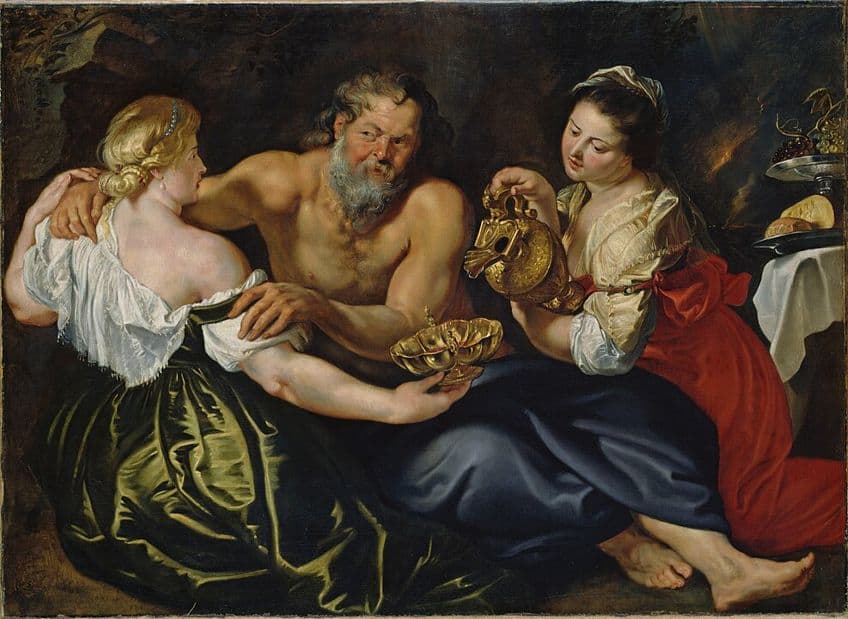
Only Lot, his wife, and two daughters escaped Sodom before it was destroyed by “burning sulfur”. They were commanded to flee and went to the town called Zoar. However, during their escape, Lot’s wife looked back and was turned into a pillar of salt, leaving only Lot and his remaining two daughters.
After Zoar, Lot and his daughters fled to the mountains where they stayed in a cave. Lot’s daughters were afraid that there were no other men available and decided to get their father drunk so that they could have sex with him to bear children and continue the bloodline. While both daughters slept with Lot, according to the Biblical scripture, he did not seem to know what was happening due to his intoxication, “He was not aware of it when she lay down or when she got up”.
The daughters birthed a son each, namely Moab and Ben-Ammi.
Lot and His Daughters in Art
The tale of Lot and his daughters is emotionally and morally shocking and deals with issues like incest, drunkenness, immoral sexual behavior motivated by fear, manipulation, and more. While there have been significant discussions over what this tale means and implicates on scholarly, religious, social, and other levels, this article will not cover it in extensive detail, but it will offer a contextual basis to discuss the role of this tale in art history.
The Biblical account of Lot’s daughters’ intercourse with their father was reportedly not a commonly portrayed narrative in art, and understandably so, however, during the 1500s (16th century) the tale gained more visual representation in Northern European art.

The depiction of subject matter like Lot and his daughters in art history can be linked to the role and importance of certain types of genres in art history, notably in religious paintings. The religious subject matter was specifically important in art because it visually taught and told morals and belief systems to the people.
However, this subject matter also allowed artists to depict the nude female figure, which, under the guise of religious or mythological paintings was acceptable. It is important to note that the story of Lot and his daughters was also depicted in terms of them fleeing the city of Sodom and not as much being involved in sexual intercourse.
For example, the famous rendition by Albrecht Dürer, who was one of the pioneering German Renaissance artists. He painted Lot and His Daughters (c. 1496 – 1499), depicting the family as they are escaping the burning city of Sodom, which also includes the salt pillar of Lot’s wife in the background.
This painting is housed at the National Gallery of Art in Washington D.C., the United States.
Lot and His Daughter Paintings
While the Biblical story about Lot and his daughters has been the subject of numerous artworks, below you will read about several selected examples, from Flemish Mannerism, and Baroque, to modern depictions. These will explore how the subject matter is composed, notably how the artist chose to depict the seduction and Lot and his daughters’ temperaments during it, with mention of the stylistic approaches of each artist. It is important to note that there are numerous other renditions of this Biblical scene, and it is worth pursuing further for a fuller account and comparison of the evolution of how it has been portrayed.

Jan Wellens de Cock
| Artist | Jan Wellens de Cock (c. 1480 – 1527) |
| Title | Lot and His Daughters |
| Date Created | c. 1523 |
| Medium | Oil on oak panel |
| Where It Is Housed | Detroit Institute of Arts in Detroit, Michigan, United States |
Jan de Cock was a Flemish artist thought to be born in Leiden, Holland, and lived in Antwerp, Belgium. His art style was reportedly categorized within Antwerp Mannerism, which was a move away from the classical representations in art, notably those of the early Flemish artists or Early Netherlandish art, and characterized by a more elaborate and decorative portrayal of figures.
This Mannerist stylization is visible in de Cock’s oil on oak panel, Lot and His Daughters (1523), which is housed at the Detroit Institute of Arts in Detroit, Michigan, United States. Here the artist depicts the somewhat elongated and fluid figures of Lot and his two daughters in the lower left corner of the composition.
They are also wearing colorful and lavish costumes.
The background appears as a vast landscape and depicts the burning ruins of Sodom in the upper right corner of the composition. A winding path from the burning city, with several figures and animals, including the figure of Lot’s wife turned to a salt pillar, leads into the foreground where the primary figures of Lot and his two daughters are on a patch of grass on the right side (our left) of the path.
Lot is depicted with one of his daughters, both in an embrace with their arms around each other. Lot appears in a receptive pose and faces his daughter whose upper breasts are exposed from her low neckline. Furthermore, Lot’s codpiece also indicates his arousal. The other daughter is standing up and pouring wine from a pitcher.

Lucas Cranach the Elder
| Artist | Lucas Cranach the Elder (1472 – 1553) |
| Title | Lot and His Daughters |
| Date Created | c. 1530 |
| Medium | Oil on panel |
| Where It Is Housed | Compton Verney in Warwickshire, England |
The German Renaissance artist, Lucas Cranach the Elder was born in Kronach and died in Weimar, Germany. His art ranged from genres like religious, mythological, and portrait paintings. He was also a printmaker and noted for his important contributions towards the Protestant Reformation during the 1500s, which included his portraits of prominent figures like Martin Luther.
Cranach the Elder reportedly painted four versions of the Biblical story of Lot and his daughters, for example, the oil on panel Lot and His Daughters (c. 1530), which is located at Compton Verney in Warwickshire, England, depicts the three figures in the immediate foreground.
The background depicts the burning city of Sodom as well as the salt statue of Lot’s wife.
One of Lot’s daughters is standing on the left, pouring wine, while the other daughter is sitting with Lot on the grass, both in a caressing embrace. The daughter’s right hand is positioned on Lot’s head, which appears to be resting on her upper chest area. This painting has also been noted to portray the deceitfulness of the daughters’ parts and how they are in the process of seducing their father.
Notice Cranach’s artistic style and the level of detail in the figures, for example, their garments and facial features, or the foliage behind them. The colors are rich and consist of warm reds and oranges with some cooler greens and blues and neutral browns and grays.

Lucas van Leyden
| Artist | Lucas van Leyden (1494 – 1533) |
| Title | Lot and His Daughters |
| Date Created | c. 1530 |
| Medium | Print and engraving |
| Where It Is Housed | The British Museum, London, England |
Lucas van Leyden was a Dutch artist, thought to have painted the oil on panel Lot and His Daughters (c. 1520), which is located at the Louvre in Paris, France. However, it has also been attributed to an unknown artist. The Louvre version also depicts the central three figures in the lower left corner, Lot is in an embrace with one of his daughters while his other daughter is pouring wine. However, in the Louvre’s version, the trio is sitting in front of a red tent with the landscape in the background depicting the ocean and the burning city of Sodom.
You see figures on a bridge on the right, which includes the Lot’s wife already turned to salt.
Another version by Leyden was his engraving, Lot and His Daughters (c. 1530), which is at The British Museum in London. It depicts Lot with his two daughters, however, the three figures in the forefront, voluptuous and mostly in the nude, which adds a new emphasis on the narrative and emotive qualities.
Here Lot and his daughter are in an embrace, she is sitting on his left leg and his right arm is reached inside her right thigh. Her right arm is around his back while her left arm and hand holds out a cup in which her sister, sitting on the left, is pouring wine.

Abraham Bloemaert
| Artist | Abraham Bloemaert (1566 – 1651) |
| Title | Lot and His Daughters |
| Date Created | 1624 |
| Medium | Oil on canvas |
| Where It Is Housed | National Gallery, London, England |
The Dutch artist, Abraham Bloemaert painted in the Mannerist and Baroque art styles. His oil on canvas, Lot and His Daughters (1624), is reportedly at the National Gallery in London, England from the Leiden Collection in New York, United States. It depicts the three figures as the central subject matter with only part of the background visible, which includes the salt pillar of Lot’s wife.
Here the figures are dressed in flowing robes, and there is some nudity, the daughter sitting on the left has exposed breasts.
Both daughters here are embracing Lot, who sits in the middle of them. On the right is a still life, depicted on a table or a flat surface. There is bread, cheese, fruit, oysters, and a pitcher, undoubtedly with wine in it. The food here has been believed to point to moral and religious symbolism, notably of the Eucharist and Lot’s relationship to Jesus Christ as a sinner and the redeemed.

Peter Paul Rubens
| Artist | Peter Paul Rubens (1577 – 1640) |
| Title | Lot and His Daughters |
| Date Created | c. 1613 – 1614 |
| Medium | Oil on canvas |
| Where It Is Housed | Metropolitan Museum of Art, New York City, the United States |
The Flemish painter, Peter Paul Rubens, was one of the foremost Baroque artists of his time. He painted religious, historical, mythological, and genre subject matter with emotionally heightened portrayals. Rubens also painted a version of the Biblical Lot and his daughters, titled Lot and His Daughters (c. 1613 – 1614), which is located at the Metropolitan Museum of Art in New York City, the United States. In Rubens’ version, you notice the muscular figure of Lot, reclining quite drunk and passively with his daughters, who are clearly seducing him.
One is sitting to his left with a blue dress on with a low neckline and the other daughter, who is mostly naked, is pouring wine and holding a bowl with an assortment of food.
Rubens reportedly depicted Lot’s posture after the depiction of the mythological figure of Silenus, which is from the Chigi collection held in Rome. Furthermore, the composition is a beautiful rendering of rich colors and contrasting light and dark. Interestingly, Peter Paul Rubens painted an earlier version of this scene titled, Lot and His Daughters in a Rock Grotto (c. 1610), located at the Staatliches Museum Schwerin, Germany. In this depiction, Lot is engaged in the act of seduction. He appears to be removing his daughter’s dress, who is also holding out a wine cup while the other daughter pours wine into it.

Artemisia Gentileschi
| Artist | Artemisia Gentileschi (1593 – 1656) |
| Title | Lot and His Daughters |
| Date Created | c. 1636 – 1638 |
| Medium | Oil on canvas |
| Where It Is Housed | Toledo Museum of Art in Toledo, Ohio, the United States |
One of the foremost female Italian Baroque artists, Artemisia Gentileschi depicted religious and mythological subject matter often of women overcoming challenges and power struggles, highlighting their heroic aspects. She was known for realistic and skillful renderings of colors and texture and was inspired by her own experiences of rape during her early years.
Lot and His Daughters (c. 1636 – 1638) by Artemisia Gentileschi, which is located at the Toledo Museum of Art in Toledo, Ohio, the United States. It depicts Lot sitting with both daughters beside him, he is holding a glass in his right hand. The one on his right (our left) is holding a pitcher and has placed her hand on Lot’s shoulder. The other daughter sits on his left (our right), and she is turned towards Lot who has her attention.
She is also holding a knife and loaf of bread in her hands, ready to cut the bread.
Lot appears to be drunk, and there are tell-tale signs that indicate this, for example, notice his left leg and foot, which is partially exposed. Lot’s unsteady foot on the ground has also been compared with his daughter’s steadier foot on our right, which further suggests their psychological dispositions.
Gentileschi has been known to subtly hint at the underlying and known sexuality whilst her figures are still clothed, which gives an added emotional depth to the composition. The artist placed her figures in a cave with subtle contrasts of light and dark, choosing blues, reds, and golden yellows for their robes.

Gustave Courbet
| Artist | Gustave Courbet (1819 – 1877) |
| Title | Lot and His Daughters |
| Date Created | 1844 |
| Medium | Oil on canvas |
| Where It Is Housed | Private collection |
The Biblical story about Lot and his daughters has also been given a modern twist by artists like the painter Gustave Courbet, who was the forerunner of French Realism during the 1800s. He was famous for painting from reality and not following the rules set by the Academy or classical ideals of painting. His oil on canvas Lot and His Daughters (1844), is reportedly part of a private collection. It depicts a somewhat lively Lot and his daughters. One daughter is lying with her back to us, the viewers, while pouring more wine into Lot’s cup.
The other daughter, who is sitting on Lot’s left (our right) is holding a cup in her lifted left arm and hand, as if cheering.
Courbet chose to depict the two daughters in the nude with only robes partially around their waists. Lot too is depicted semi-nude; his robe is open revealing his chest and part of his legs. The three figures appear to be sitting in a cave with an opening on the left that overlooks the distant landscape. It appears to be dusk due to the orange glow on the horizon. The background appears dark, almost black, while the figures are clear and in view in the foreground as if highlighted by light. Notice the contrasts here between light and dark.
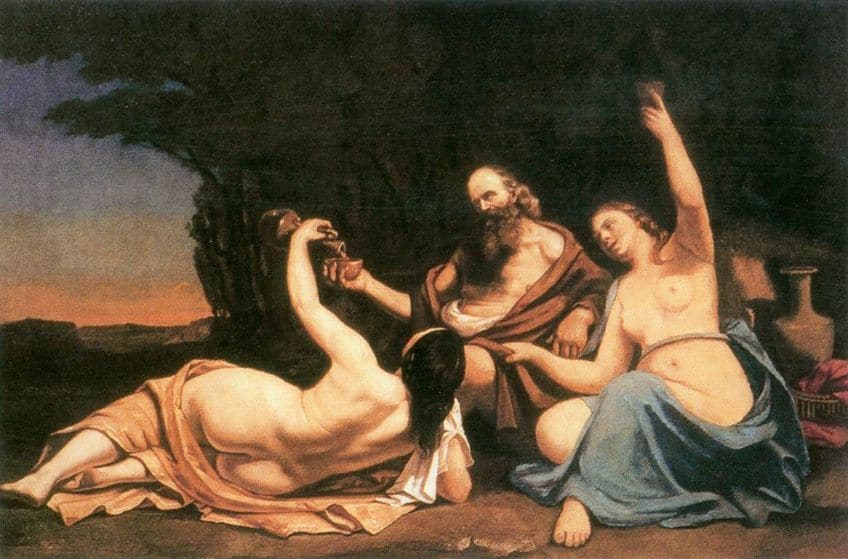
Paul Cézanne
| Artist | Paul Cézanne (1839 – 1906) |
| Title | Lot and His Daughters |
| Date Created | c. 1865 |
| Medium | Oil on canvas |
| Where It Is Housed | Private collection |
The Post-Impressionist, Paul Cézanne, was celebrated for his influence on art movements like Cubism and for introducing new modes of making art that moved beyond the Academic art rules. He was known for depicting his compositions from more calculated perspectives and his subject matter spanned landscapes, portraits, still lifes, nudes, and others.
Lot and His Daughters (c. 1865) by Paul Cézanne, which is part of a private collection.
It depicts the Biblical trio in an overt sexual display where Lot and his daughter are in the coital process and the other daughter appears to be seated on their left in a calm state with part of her left breast exposed. They appear to be in the cave and there is a table or slab on the right with a large pitcher on it on the right. The scene is depicted in fluid and expressive brushstrokes with contrasts between light and dark, highlighting the figures on the left with dark, almost black, areas in the background.
Marc Chagall
| Artist | Marc Chagall (1887 – 1985) |
| Title | Lot and His Daughters |
| Date Created | 1958 |
| Medium | Etching |
| Where It Is Housed | Private collection |
Born in Russia, Marc Chagall was a well-known artist who created fantasy or dream-like compositions. He was well known for his style incorporating a wide variety of art movements like Fauvism, Cubism, Surrealism, Symbolism, and Expressionism, and created art in a variety of media like oils, watercolor, drawing, etchings, and more. He was a multi-talented artist who did not belong to a specific art style.
While his subject matter ranged, he also created a version of the Biblical Lot with his daughters, titled Lot and His Daughters (1958), which is an etching and hand colors on paper and reportedly also part of a private collection.
Here Lot and his daughter are lying down, both naked, on what appears to be the ground, possibly the inside of the cave. Lot is holding a glass of wine in his left hand and his daughter is holding a bottle in her left hand. The other daughter appears to be standing behind the two’s heads and looking over them, however, she is wearing a dress.
The Many Masks of Lot
The Biblical story about Lot and his daughters has not been a widely portrayed theme in art compared to other Biblical tales, but it has had its own place and evolution in art history that is worthy of showing and telling.
While the Bible’s story about Lot has been about him being unaware of what his daughters did to him, paintings throughout the centuries have masqueraded Lot in different masks, from his drunken compliance and stupor to his consenting and drunken ravages. His tale has been told through numerous artworks, caught in between his two daughters, who have been given their own masks as seductresses.
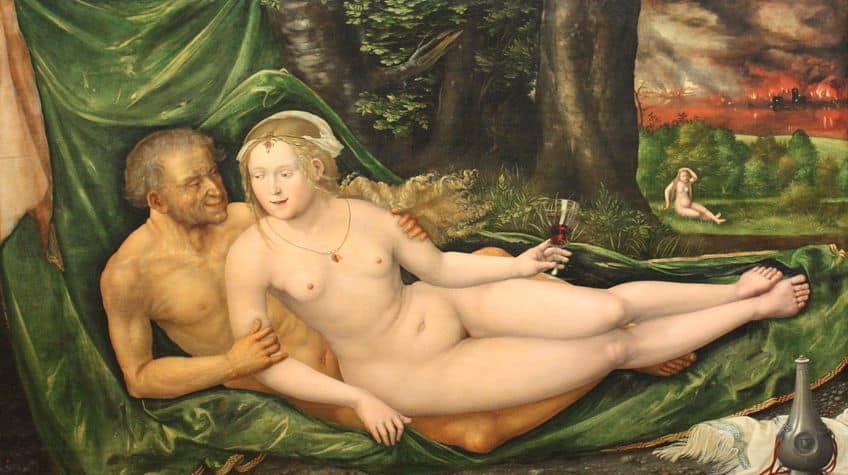
This article explored only a few of the commonly mentioned Lot and His Daughter paintings. It discussed the many postures and expressions of the famous, and maybe also infamous, Biblical trio, and their bawdy story. The many masks of Lot and his progeny portrayed within artworks over the centuries have become an intriguing topic of discussion and one worth unmasking.
Frequently Asked Questions
Who Were Lot and His Daughters?
Lot was a patriarch from the Bible’s Old Testament Book of Genesis. He is popular for the story about his and his family’s escape from the city of Sodom, his wife who turned to salt when she looked back at the burning city, and his two daughters who got him drunk and engaged in sexual intercourse with him to ensure their bloodline’s continuation.
What Does the Story of Lot and His Daughters Mean?
The story of Lot and his daughters can be interpreted to symbolize the dangers of seduction, sexuality, and alcohol. It also comments on how fear can drive people to do immoral acts when there is a lack of faith.
How Many Lot and His Daughter Paintings Are There?
There are numerous Lot and His Daughter paintings. Each artist who created an artwork about this topic depicted the Biblical scene in a different manner and style, with Lot engaging with his daughters either in a sexually explicit manner or him being unaware and drunk.
Alicia du Plessis is a multidisciplinary writer. She completed her Bachelor of Arts degree, majoring in Art History and Classical Civilization, as well as two Honors, namely, in Art History and Education and Development, at the University of KwaZulu-Natal, South Africa. For her main Honors project in Art History, she explored perceptions of the San Bushmen’s identity and the concept of the “Other”. She has also looked at the use of photography in art and how it has been used to portray people’s lives.
Alicia’s other areas of interest in Art History include the process of writing about Art History and how to analyze paintings. Some of her favorite art movements include Impressionism and German Expressionism. She is yet to complete her Masters in Art History (she would like to do this abroad in Europe) having given it some time to first develop more professional experience with the interest to one day lecture it too.
Alicia has been working for artincontext.com since 2021 as an author and art history expert. She has specialized in painting analysis and is covering most of our painting analysis.
Learn more about Alicia du Plessis and the Art in Context Team.
Cite this Article
Alicia, du Plessis, “Lot and His Daughters – Artistic Depictions of this Biblical Family.” Art in Context. January 5, 2024. URL: https://artincontext.org/lot-and-his-daughters/
du Plessis, A. (2024, 5 January). Lot and His Daughters – Artistic Depictions of this Biblical Family. Art in Context. https://artincontext.org/lot-and-his-daughters/
du Plessis, Alicia. “Lot and His Daughters – Artistic Depictions of this Biblical Family.” Art in Context, January 5, 2024. https://artincontext.org/lot-and-his-daughters/.


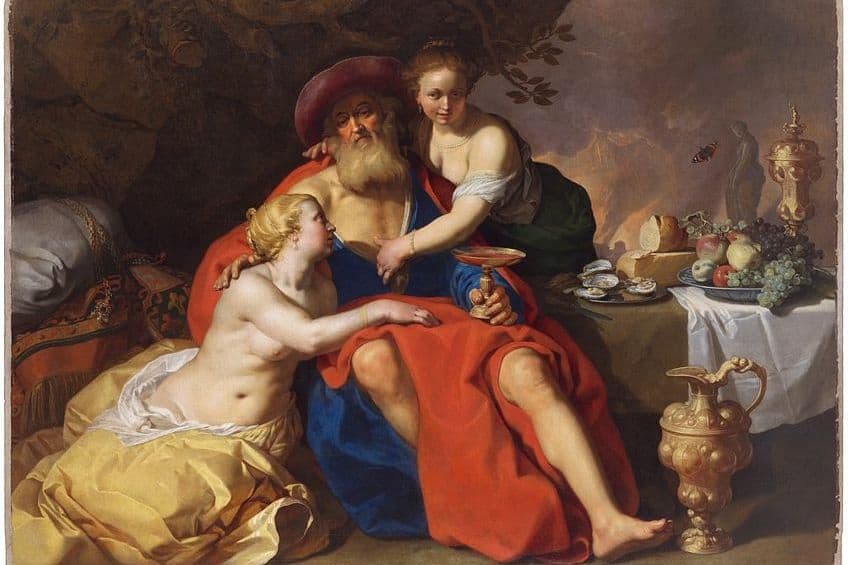




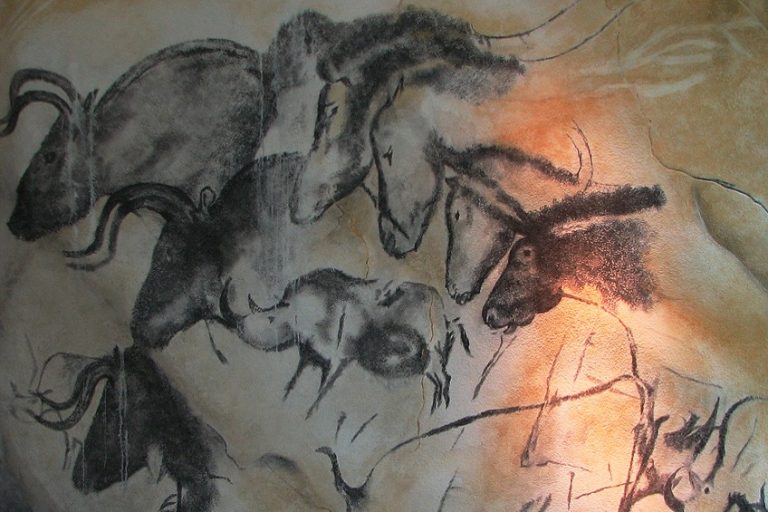




It has always made me think about the casualness of approaching a delicate subject, even for these days. A topic that is not talked about in an open and responsible way. A topic that the brain and the senses desire, but which the law and social convention prohibit. I wonder what it first, when a young naked man (who hasn’t seen many naked girls, even up close), going to bathroom rubs his noses, near his mother’s noses, when she coming out, naked, of the bathroom; feelings or morals? The era is full of painted taboos. With curiosity, Nini